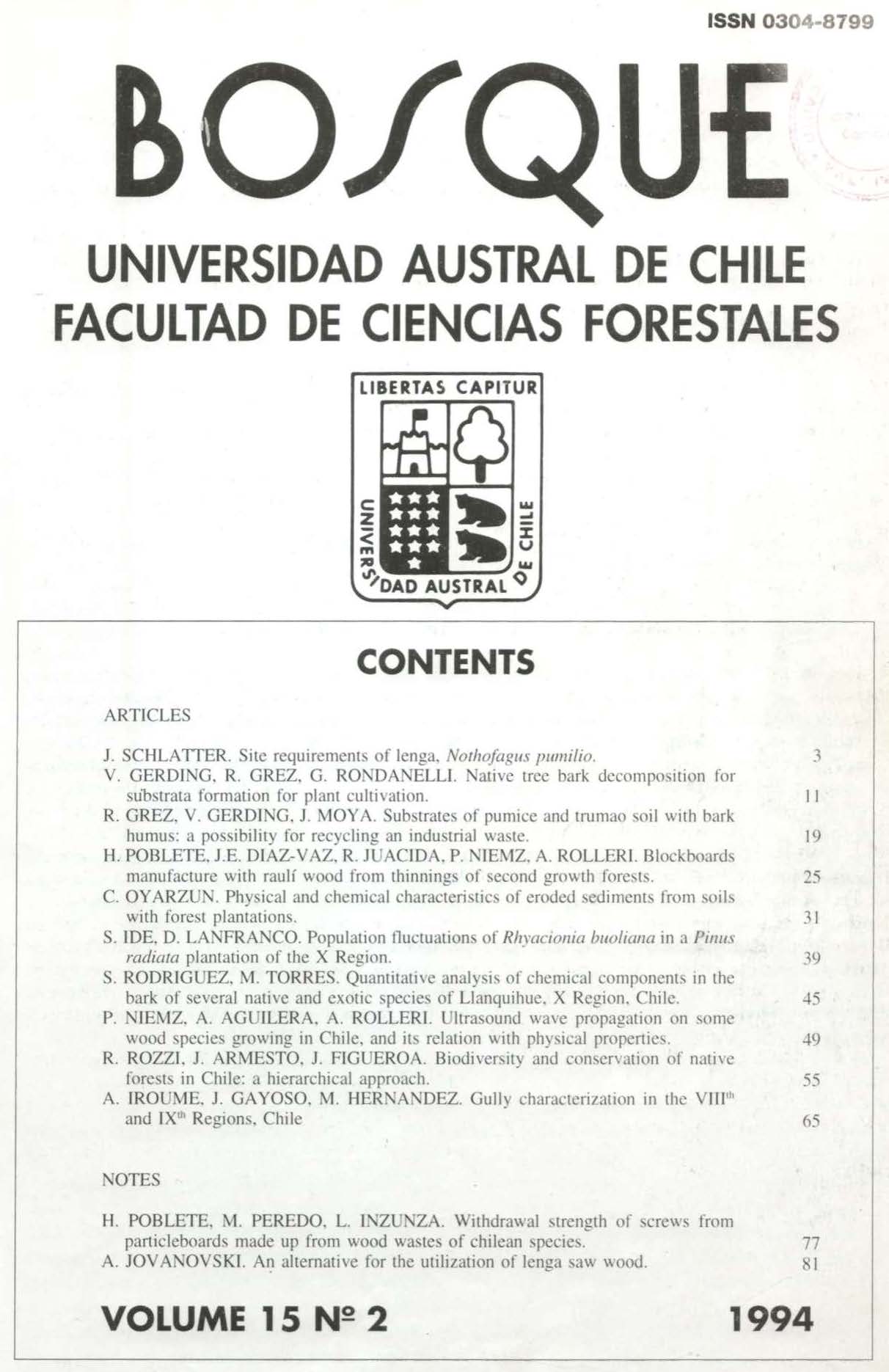Gully characterization in the VIIIth and IXth Regions, Chile
Main Article Content
Abstract
The gullies existing within an area of 66 thousand hectares were studied to characterize the affected area, location of affected terrains, level of activity, form, size (depth and surface), location in the slope, aspect, advancement rate, kind of affected resources and possible origin. The studied area is distributed in the provinces of Bio-Bio, Arauco and Malleco, in the VIIIth and IXth Regions, Chile, concentrated mainly in the Nahuelbuta range of mountains, between the cities of Nacimiento and Angol.
The total area occupied with gullies is almost 450 hectares. Because gullies occurred associated with other forms of erosion, more than 6.000 hectares, which corresponds to 8% of the studied area, are estimated to be affected by some level of erosion.
Gullies are mainly located in terrains having soils derived from granitic materials. Although these terrains are now covered by plantation forests, 96% of the gullies are still active.
The mean depth and surface of gullies were 9.8 meters and 0.42 hectares, respectively.
The characteristics of the studied gullies show that 62% originated from agricultural practices before the forest development of the area. But, 26% was generated from unstable cut slopes and badly designed drainage systems of recently built forest roads.
The level of activity, size, location in the slope and advancement rate suggest the need to carry out especific gully control measures. Plantations have not controled the erosive process, which can be accelerated with harvesting and until the establishment of a new rotation.

